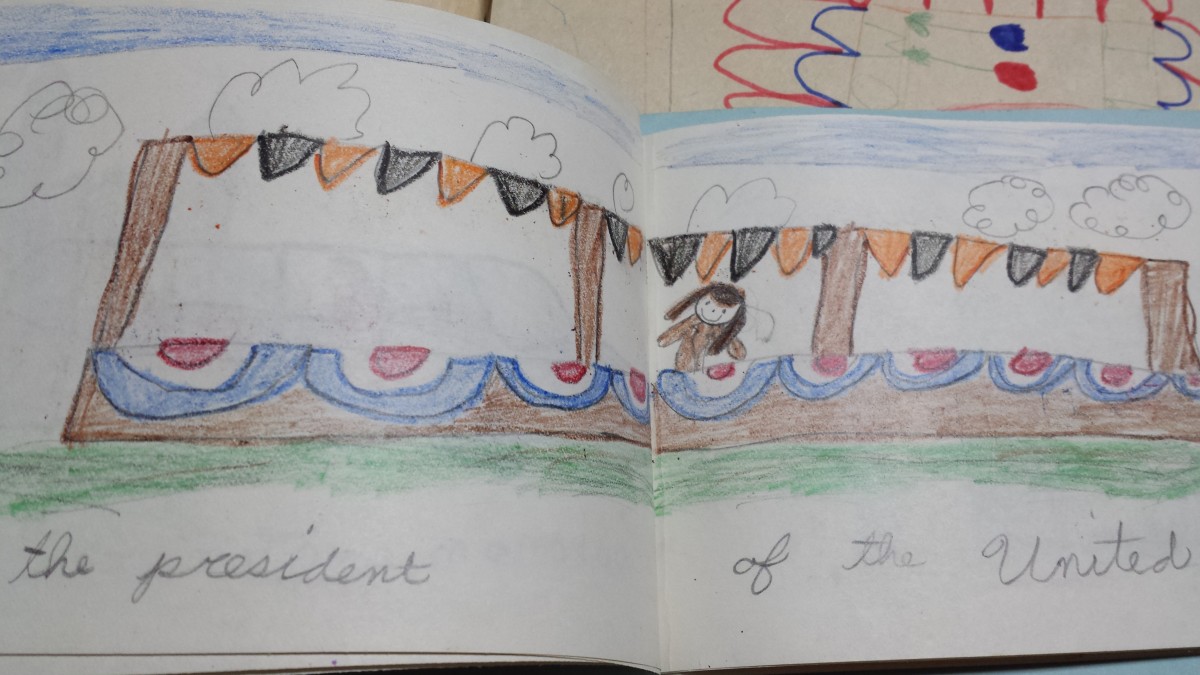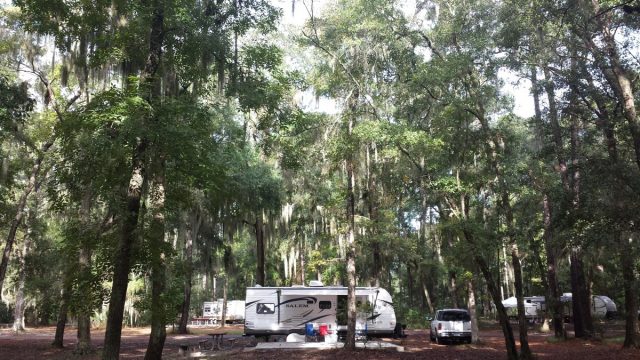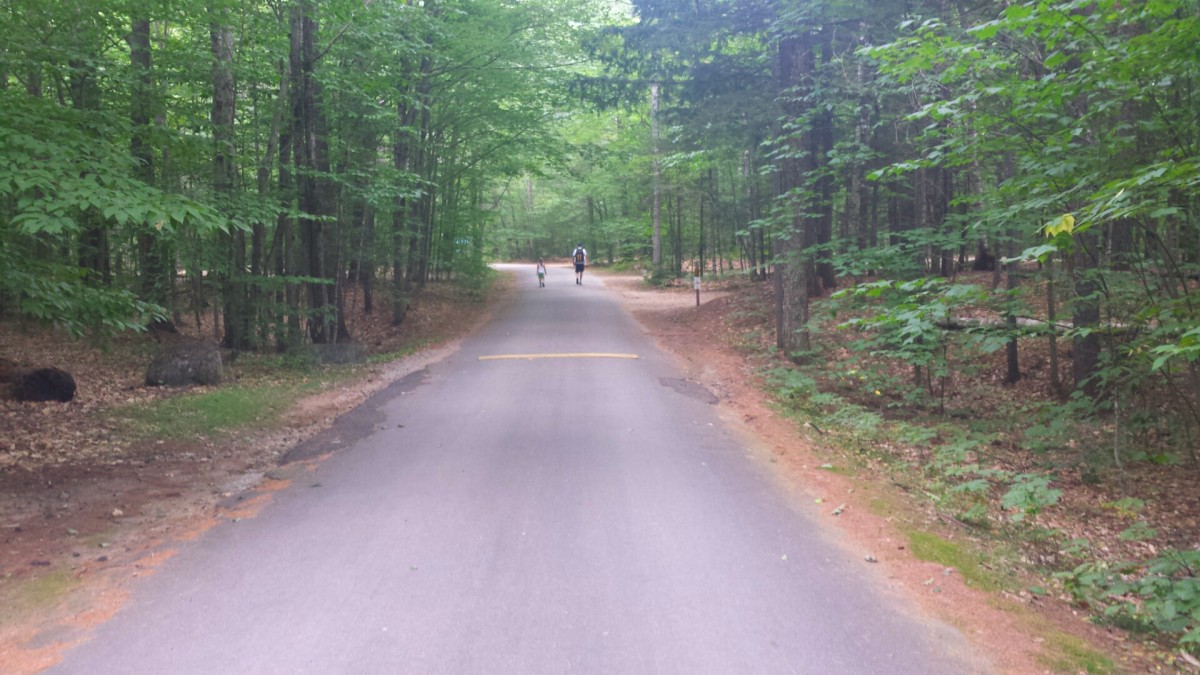Early on in our travels, folks wondered how we were able to do what we do — that is travel full time and/or live tiny. The latter seems to be easy to comprehend; people can get behind selling everything and downsizing. It seems to be a different story regarding the former. Although many people seem to embrace the idea of traveling full time, even expressing envy, they cannot comprehend how it might be done. We cannot overemphasize that our lifestyle is a choice, and we just decided to go for it. We also have a trifecta life arrangement: I work from home, we are an unschooling family and my husband can work remotely and freely as a web developer. Yet there is one more really important piece to our tiny travel life, and that is a budget.
Budgeting is the other part of the answer to how we do what we do. Before we began to travel, we made a rough budget that translated to needing about $75,000 a year minimally. In the past, we have made a lot more and we have made a lot less, but for this journey, $75,000 seemed like a reasonable base.
Not that long ago, Princeton came out with a study which suggested that household income need only be $75,000 to maintain overall happiness. It was reported in Time Magazine in 2010, and then referenced later by Forbes (2012), Huffington Post (2014) and Social Media Week (2015). More detailed examination of that information suggested that $75,000 was really a benchmark for household happiness of all fifty states, with Mississippi at the cost-of-living low end at $65,850 and Hawaii on the high end at $122,175. In other words, depending on where you live, there is a benchmark household income that maintains happiness as a whole, and anything more than that did not improve one’s happiness.
This is not necessarily any bit of information we used to get started, but I was reminded of the study as we began to reevaluate our travel budget nine months later. As it turns out, our guess was correct: In order to travel the country in a travel trailer full time for this family, we basically need $75,000 to do what we want and sustain our happiness. As we have fine-tuned our budget, some numbers have changed as well as some categories, but, essentially, the overall income requirement is still the same.

So what does this budget look like you might ask? How can you travel full time — probably anywhere — while paying your bills, saving some money, playing as much as possible and enjoying life? Well, we thought it was something that you might like to know and we thought we’d share it with you.
But before we continue with the numbers, it may help to think about this budget in terms of what it would cost to live in an apartment for a year, or a home with a delightfully low mortgage payment. You could make $75,000 for your household and stay in one place — say in Grand Rapids, Michigan — all year long, or you could budget the same and travel. It translates very easily. You would budget for rent/mortgage, utilities; fuel, car repairs; insurances; food; home supplies, pharmacy; clothing; entertainment, savings and so on. In our case, we have budgeted for a mobile life, rather than a stationary one. You just have to decide how much you need to be happy, and that means an evaluation of your quality of life, not necessarily the ebb and flow of day-to-day life, which can fluctuate depending on stressors, weather, family issues, feelings of self worth or other variables. What makes you really happy and how much do you need to maintain and sustain that?
With that, let’s turn to the budget, which we happen to maintain with the Mint app, whose delightful homepage reads “That horizon may be closer than you think.” We have a lot of fun with our budgets, which right now are very frugal, but creative. We are doing almost everything that we would like to do, and this is what it looks like.
The Budget
Rent: $1200 – We budgeted for up to $45 per day, including firewood. The closer to certain famous attractions or cities one goes, the more a site will cost per day. Resorts are also generally more expensive. Just look carefully. Renting for a month reduces costs significantly, breaking down to around $22 per day. Also, staying at a state or national park is less expensive, especially if you require little to no hookup. Parks require fees, though. State parks are a better deal if you don’t have a national park pass, but a one-time, year-long purchase of a national park pass gets you in anywhere and all you do is pay for the site. Scenery is free!
Groceries: $700 – One of our budget numbers that has not budged is our grocery category. For as long as we can remember, we consider our food purchases and preparation proactive healthcare. Local and fresh food can cost more (sometimes), but we know the source. Homecooked meals ensure that you know what you are eating and is the only way to reduce costs in the food department. Going out is very costly and rarely lasts longer than a second meal, plus there is take-out waste. Our food budget is high, but we believe that it reduces our overall health expenses.
Beer/Wine: $200 – Every traveler on a budget will tell you that alcohol empties your wallet. It is true: Beer and wine are expensive. We decided that we enjoy wine and craft beer, especially as they tell a stories of a region or culture, and we would like to continue to imbibe. However, we have a tight budget for it; otherwise it becomes a blind expense.
Fuel: $250 – This includes fuel for the truck and propane for the camper. We drive an 8-cylinder Yukon, which weighs more than our travel trailer! As we write this, fuel in the U.S. costs very little right now compared to prices we paid in New York state in the summer (2015). We drive up to 200 miles per tank while hauling the camper and up to 300 miles unhitched. Our two propane tanks weigh 30 pounds each and hold 6.5 gallons per tank. We pay about $24 per refill. It takes roughly three or more weeks to go through a tank, unless it’s extremely cold.
Vehicle Service and Parts: $25 – There will always be a need to budget (or save) for larger repairs or service on a vehicle, but generally we find that we hardly need anything monthly for the truck or RV other than the occasional oil change.
Home Services: $60 – Our monthly charge for our storage crate in Michigan. This one is easy on the budget!
Home Supplies: $15 – Toilet paper, paper towels, baking soda, vinegar, Dr. Bronner’s soap, toiletries, etc — the numbers on this vary. Sometimes we go over budget, but mostly we stay under budget. I make a lot of natural DIY cleaners , my latest being a natural ant trap with Borax and powdered sugar. However, some of these items, like baking soda and vinegar, carry over to kitchen supplies. As I write this, we are over budget, but not by much. Next month we will hardly spend anything in this category.
Clothing: $100 – This is a just-in-case item. We don’t buy clothes much these days; all of us still have more than we need and keep what we have for layering. Our swimsuits are the items that require upkeep. Clothes are expensive and many of us own unnecessary items. Look for consignment shops or Goodwill or sales to keep costs low. We haven’t purchased clothes in two months and don’t feel any need to do so in the near future. Under budget! Yes!
Auto Insurance: $139 – A fixed number. This includes the camper too.
RV Personal Liability – We plan on adding this to our insurance. TBD.
Entertainment: $149 – This incorporates movies, children’s museum, new music, zoos — anything “entertaining.” We generally are under budget here, too. We have music and some movies backed up to our server and we have DVDs; otherwise, we stream through our GooglePlay or Netflix accounts. A basic Google Play account is free, but you can buy a monthly subscription, which we have. We also can borrow movies and music from libraries.
Pharmacy: $40 – This balance ebbs and flows, depending on the allergies or colds we encounter around the country. Mostly, we are under budget, but it is handy to have and consider.
Gifts: $50 – This may seem low to many of you. It is really, especially if you are a gift-giver. However, we have found that we need little, especially in tiny living. We prefer experiences over things. We try to give gifts from the heart. Often, those come from nature, so we play with that and give natural gifts. A gift-giving budget will keep you focused on buying only what you need and for whom. Plus, you can keep an eye open for things that you find through your travels.
Life Insurance: $382 – We happen to have one really high life insurance payment and one really low payment. Changing that would not be to our benefit now.
Books: $20 – This includes e-book or hardcover purchases and our New York Times subscription. Utilizing local libraries is a great way to check out a neighborhood or city and keep on a book budget. Also, campgrounds, resorts and hostels almost always have a library or inexpensive books for sale. There are many options here to stay on budget.
Health Insurance: $483 – A fixed cost. Currently, our health insurance is through our home state of Michigan.
Restaurants: $125 – Dining out is something that we liked to do. However, we think our food is best, truly. We all like to eat around our own table and listen to music, so we don’t go out often. If you do like to go out and eat, this is a category that you may want to pad more, taking money from your grocery budget and putting it in the restaurant budget. It all will be up to you.
Doctor/Health: $33 – Doctors are a last resort for us, so this is a category with a minimal budget.
Bank Fee: $10 – Because. Banks.
Mobile Phones: $150 – Service for two phones and insurance.
And the rest, goes to savings and taxes. We fill our savings with what we can, whenever we can. Some weeks we can add more, some weeks we can add less, but we add to it. You always will need some backup — and cash. Cash will come in very handy while traveling generally. How else could we have purchased those beignets in Perdido Key?
Other – For the record, we do not have credit cards. LOTS of travel sites will tell you that you need a credit card for various things, including ones that will earn you points for air travel. That is a personal choice, but it is not our choice. We are a nation in debt, and we prefer to stay away from credit cards as part of a budget.

Obviously, not all full time travelers are the same. There are backpackers, expats, RVers and tenters; part-timers with full time ambitions, who can only travel during summer months; teachers; missionaries; artists-in-residence and more. We recently met someone who sold everything and lives on a boat full time and works digitally. Many of these folks entered into full time travel with a hefty savings that they would prefer not to touch while traveling, using it only in emergencies. Some RVers are like us and sold everything and are full time, going wherever, whenever. And many folks have tried — some successfully and some not — to earn a living as travel bloggers. No matter what kind of traveler you are, creating and maintaining a budget is the best way to stay on track and keep doing what you love to do — not just for travel, but for life.
I am/we are fortunate and a little bit different than many of our traveling compatriots: We already had a growing business before we started traveling. If and when our traveling adventures add to our revenue streams, that would, of course, be delightful, but not necessary, and we would allow that to happen organically. Another aspect of our makeup as full time travelers is that we have a child. There are other traveling families out there, but many full-timers and nomads don’t have kids. Some places charge more for kids! As a burgeoning, full time traveling, entrepreneurial family, our flexibility for travel depends on our work flow, cash flow and the abilities of our little one to go with that flow. That is why traversing the world in a travel trailer in the U.S. was a great way to kickstart our travel adventures and helped us become really good at budgeting.
For us, the feelings of freedom and independence that come from entrepreneurship are heightened by traveling full time. In fact, being entrepreneurs and traveling go hand-in-hand. But unless one has a healthy savings account, a regular paycheck or disposable income, travelers have to earn a living, and we have to make time to work — a lot or a little, depending on one’s needs or desires, and especially if we don’t want to dip into our savings. Although we are newer to the practice of travel as lifestyle, I’ve read it time and again from most of those more veteran travelers that I follow: You have to find and make the space and time to earn a living, and you have to budget.
Assess what you have (savings, income, whatever). Sell, sell, sell, donate, sell. Offload. Assess what you really need. Make a preliminary budget.
Does eating out every night make you happy? Does a trip to every national park make you happy? Do you need a large book budget, or would you be happy borrowing from libraries, friends or generous campgrounds or hostels? Do museums make you happy? Does the opera sustain your joy? Do you need an urban or rural environment? Must you take your family to Europe and take a train or RV through all of it? Whatever it is that you need to do to fill your heart while still paying your bills is what you need to consider. Then you know what you can and cannot do, or should not do, and then enjoy.
Making a budget has become a fun and creative tool for our travels. It has enhanced our experience and validated our downsizing to tiny and experiences over things. Don’t be afraid of making a budget. It is your friend in the long run and will keep your spending in check.
For more information on budget apps like Mint, check out Our Freaking Budget or Gotta Be Mobile, which include a variety of budget tools and their respective reviews.
We hope that this helps your financial planning for travel, or for life. Here’s to travel and to life untethered!







Very interesting, thank you, Liza. I was curious about what it costs to live this kind of life, and now I know.
So does it seem an outrageous amount, or a reasonable one?
Love this post Liza! Very informative. Thank you…
Thanks for reading. I like to repost that every once in a while. Seems to be of interest to folks. 🙂